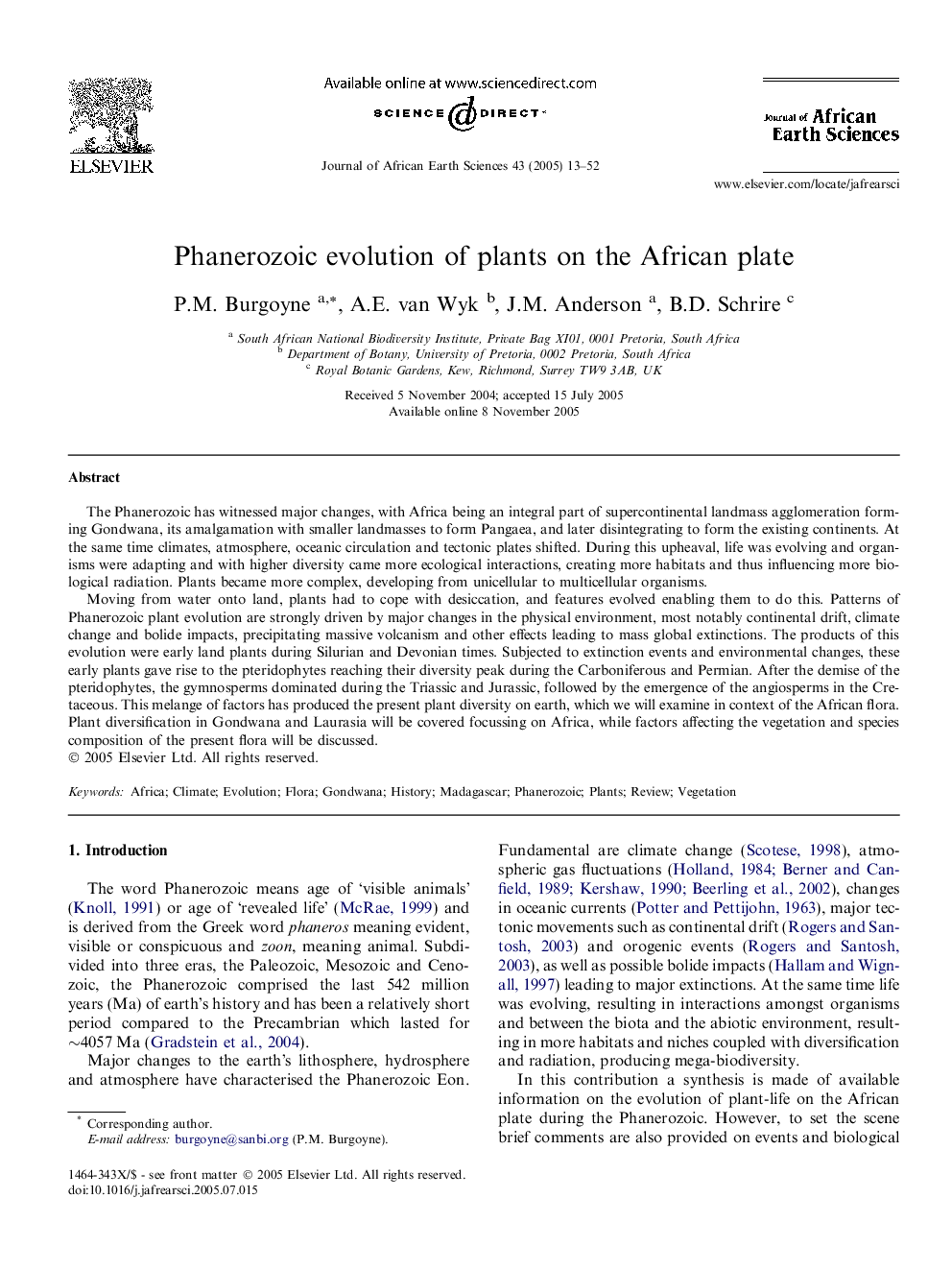| Article ID | Journal | Published Year | Pages | File Type |
|---|---|---|---|---|
| 9535297 | Journal of African Earth Sciences | 2005 | 40 Pages |
Abstract
Moving from water onto land, plants had to cope with desiccation, and features evolved enabling them to do this. Patterns of Phanerozoic plant evolution are strongly driven by major changes in the physical environment, most notably continental drift, climate change and bolide impacts, precipitating massive volcanism and other effects leading to mass global extinctions. The products of this evolution were early land plants during Silurian and Devonian times. Subjected to extinction events and environmental changes, these early plants gave rise to the pteridophytes reaching their diversity peak during the Carboniferous and Permian. After the demise of the pteridophytes, the gymnosperms dominated during the Triassic and Jurassic, followed by the emergence of the angiosperms in the Cretaceous. This melange of factors has produced the present plant diversity on earth, which we will examine in context of the African flora. Plant diversification in Gondwana and Laurasia will be covered focussing on Africa, while factors affecting the vegetation and species composition of the present flora will be discussed.
Related Topics
Physical Sciences and Engineering
Earth and Planetary Sciences
Geology
Authors
P.M. Burgoyne, A.E. van Wyk, J.M. Anderson, B.D. Schrire,
